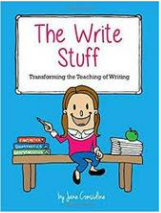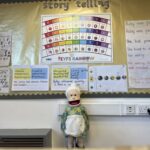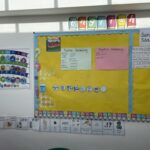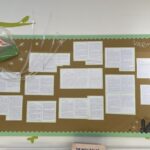Writing
“Description begins in the writer’s imagination, but should finish in the reader’s”
– Stephen King
Our Intent for our Writing Curriculum at Illogan School
At Illogan School, we understand the importance of developing passionate, diverse, curious, and creative writers who have strong literacy skills to inform and express their abilities both through the spoken language and with the written word. We believe that our writers have a responsibility to consider all perspectives and represent all communities to provide inclusivity and representation within all forms of written and spoken language.
As per the National Curriculum for English, we provide the following for all pupils:
-
To be able to read easily, fluently and with good understanding.
-
Develop the habit of reading widely and often, for both pleasure and information
-
Acquire a wide vocabulary, an understanding of grammar and knowledge of linguistic conventions for reading, writing and spoken language
-
Appreciate our rich and varied literary heritage
-
Write clearly, accurately and coherently, adapting their language and style in and for a range of contexts, purposes and audiences
-
Use discussion in order to learn; they should be able to elaborate and explain clearly their understanding and ideas
-
Are competent in the arts of speaking and listening, making formal presentations, demonstrating to others and participating in debate.
-
For all our children to use the wide range of writing tools they have accessed and developed whilst on their writing journey with us.

The Write Stuff approach across our School
Students at Illogan are taught writing through Jane Considine’s ‘The Write Stuff’ curriculum from Reception through to Year 6. The Write Stuff is based on two guiding principles; teaching sequences that slide between experience days and sentence stacking lessons. With modelling at the heart of them, the sentence stacking lessons are broken into bite-sized chunks and taught under the structural framework of The Writing Rainbow. Teachers prepare children for writing by modelling the ideas, grammar or techniques of writing.
The Write Stuff approach by Jane Considine
Below are some examples of our Plot Point Maps and Sentence Stacking walls that our children use to understand the writing process and follow to write their own stories.
Our EYFS Learning Wall with Grandma Fantastic


Year 6 Writing based on the unit Varmints

Implementation:
The Write Stuff brings clarity to the mechanics of writing and provides clear systems through which to focus the writer’s attention. The combination of fiction and non-fiction units we have carefully selected to follow provide children throughout their journey with the experience of a wide range of high quality texts and authors. In our lessons teachers follow a repeated pattern of ‘Initiate’, ‘Model’ and ‘Enable’ whereby they use the three zones of writing to provide a consistent whole school systematic approach to writing carefully constructed sentences. Where children are confident and enthused, we encourage pupils to ‘Deepen the Moment’ to further surround our reader using one of our taught lenses and adding further depth to our writing.
The Fantastics offer 9 lenses with which to structure ideas and target children’s thinking. This supports children in developing variety in their writing by focussing on the vocabulary used, initiating ideas, provoking thoughts and igniting imaginations.
The Grammaristics focus on the importance of accurate grammar where tools are taught and used immediately to help children develop fascination around language so that they can manipulate and carefully structure words into sentences
The Boomtastics focus on the art of writing, using a range of literary devices and techniques to make careful choices, playing with language to add flair to our writing and achieve various intentional impacts on our reader, painting vivid pictures through our word choices.
Spellings
In KS1 and KS2, Spelling is taught through the Spelling Shed schemes produced by the Literacy Shed. Each week, the children will learn a new spelling rule and their weekly spellings reflect this rule. We use a variety of spelling strategies and methods to support the learning of spellings which is then supported through the online Spelling Shed portal where our children from Y1-Y6 will have further practise and opportunities to support their learning.
How to support my child with spelling
To help your child learn their spellings, please login to Spelling Shed at home with your child and complete some of the spelling activities the website offers every week. In addition, new spelling activities and sheets will be provided for your child by the class teacher each week. Taking time to support your child in understanding and discussing the new spelling rule can further support their understanding of both spelling but also the origins of words from our wonderful language. Please find below a copy of the link to Spelling Shed.
As well as learning spellings that link to a spelling rule, the children will learn common exception words. These words do not fit specific spelling rules and therefore need to be learnt independently. Please see below for the common exception words that the children will learn to spell by the end of the year for each year group. You can help your children at home by learning to spell a few words per week.
Handwriting
Early letter formation is taught through Read Write Inc. lessons in EYFS. Daily lessons offer the opportunity for our pupils to practise forming letters whilst also learning key rules and rhymes to ensure correct letter formation is established. The children will also practise letter formation through continuous provision. Please see the picture below for the Read Write Inc. letter formation rhymes that we teach the children.
In Year 1 up to Year 6, the children have regular handwriting lessons following the Letter-Join Scheme. In Year 1, the children build upon the letter formation that they have learnt in EYFS. From Year 2 to Year 6, the children learn to join their handwriting.
How can I help my child with their handwriting?
In EYFS, ensure your child begins by starting letters in the correct place and saying the rhyme as you form the letter. From Year 1 to Year 6, we have provided some guidance to support handwriting progression when practicing from home below. We sugges that you practise the letter formation or joins for your child’s year group. When writing, please remember that your child needs to be sitting on a chair with their feet on the floor and practising writing on a line rather than plain paper.
If you have any questions about handwriting, please ask your child’s class teacher. They will be more than happy to help.
Handwriting Progression

